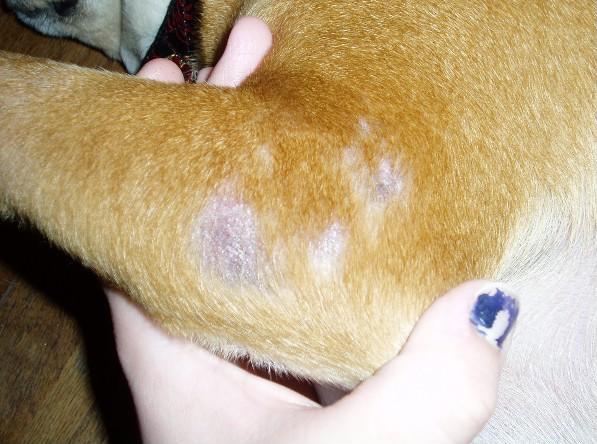How to Get Rid of Canine Acne

This kind of skin disorder is common among certain breeds, particularly for 5 to 8 month-old English bulldogs, Boxers, Great Danes, Rottweilers and Doberman Pinschers.
So how can you tell if your dog has acne? Dogs that have this kind of skin problem develop multiply blackheads or comedones in areas like the muzzle, lips, and chin. If left untreated, canine acne can develop swellings, scabs, and more blackheads, which normally do not affect the dog unless these develop into a secondary skin infection that could cause irritation, itching, and of course pain. If you think your dog's lips or chin have blackheads and swellings that might develop into a chronic type of skin disease, the best solution is to take him or her to the local vet for treatment.
Unfortunately, most canine acne cases cannot be cured entirely but it can be controlled with proper treatment and medication.
The vet would normally base his or her findings on the dog's blackheads, but for further assurance he or she might perform a skin biopsy on the dog. This is also to ensure that the canine acne isn't caused by more severe problems such as mite infestations (demodecosis), ringworms, puppy strangles, and other allergies that could be causing the blackheads and swelling to develop.
Here are some options for canine acne treatment:
- The vet will usually recommend regular cleaning of the infected areas with anti-acne products such as benzoyl peroxide or mild anti-seborrhea shampoos in order to lessen and rid the dog of the bacteria that causes the plugging of debris within the skin and to remove such debris effectively.
- Antibiotics may be needed and prescribed if the canine acne becomes worse due to secondary skin infections that could cause incessant itching, scratching, and pain on the dog. The antibiotics are usually needed for 3 to 4 weeks, but there is a possibility that a swab test would be required for further observation. Make sure that the medications used are prescribed from a well-rounded veterinarian so as to prevent further pain and damage from happening to your pet.
- Of course, if things have gotten worse and you see your dog scratching endlessly on the infected parts (especially the face), it would be best to use an anti-inflammatory drug, which usually comes in the form of either a steroid cream or injection that will be able to lessen the discomfort your dog feels. Again, consult the veterinarian first before buying these drugs to ensure the safety of your dog's health.
I also recommend you check out products that naturally help to clear up canine acne by working with your dog's immune system. Some of these products will also help to relieve scratching and itching that may develop as a result of the acne.













